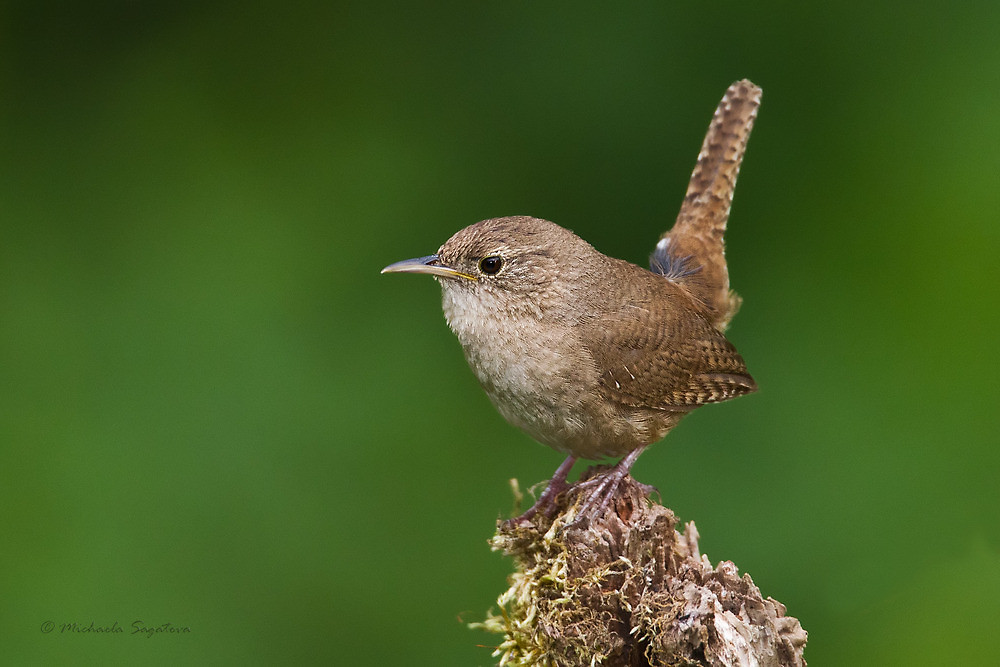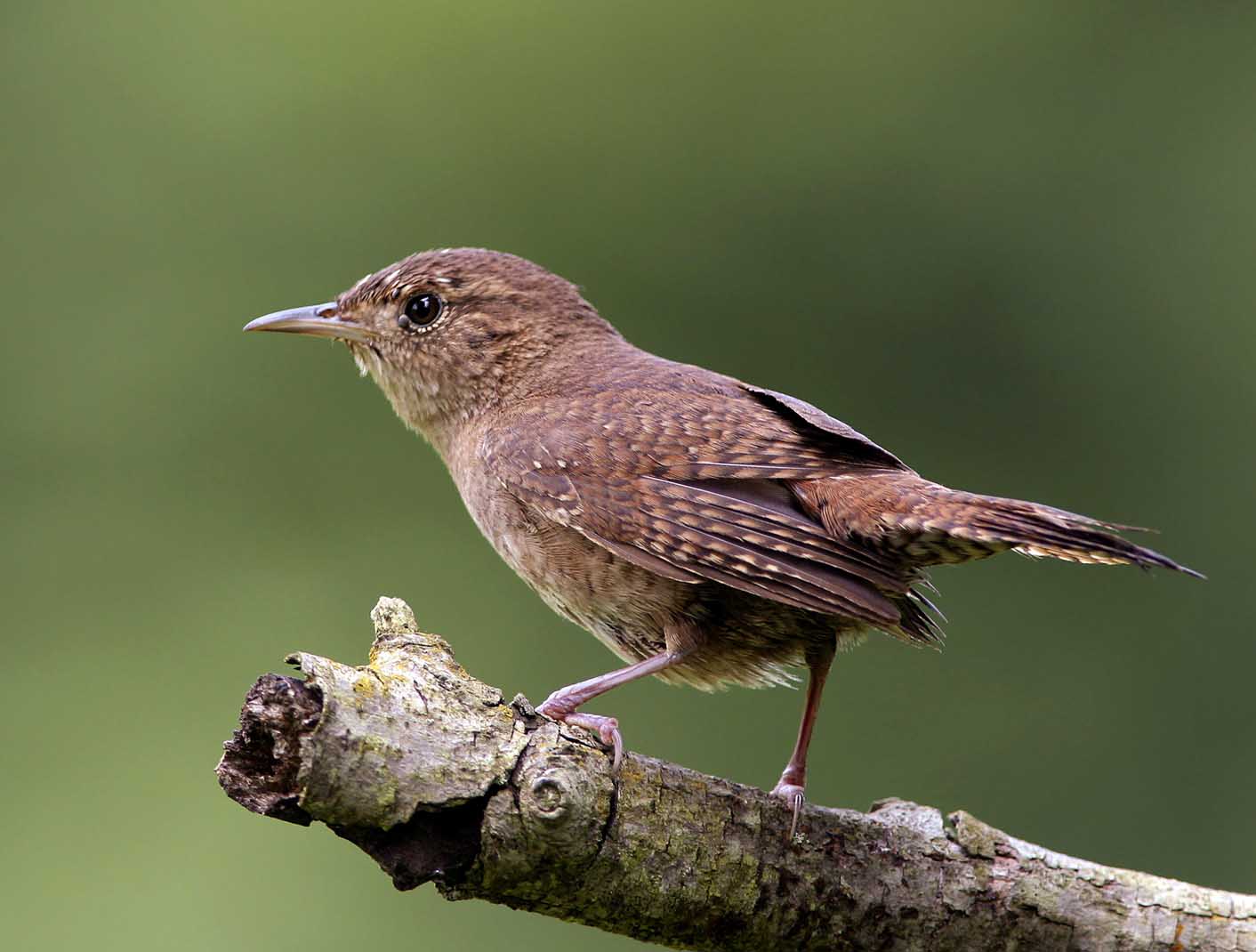
Troglodytes aedon
TAXONOMY
Silvia domestica Wilson, 1808; suppressed in favor of Troglodytes
aedon, Vieillot, 1809. Three subspecies recognized (Clements).
OTHER COMMON NAMES
French: Troglodyte familier; German: Hauszaunkцnig; Spanish:
Saltapared Cucarachero.
PHYSICAL CHARACTERISTICS
4.6–5 in (11.5–12.5 cm). Weight 0.28–0.40 oz (8–11 g). A
rather plain gray-brown wren without prominent markings.
Crown and nape are medium-brown; back and rump are reddish
brown; wings and tail have narrow dark barrings. Face is
gray-brown with ill-defined pale supercilium; throat and chest
are buffy-white; belly and flanks are buffy-red. Eyes are
brown; bill is dusky-brown above and pale horn-gray below;
legs are dark brown. Sexes are similar. Juvenile has dusky mottles
on breast.
DISTRIBUTION
Breeds across North America from New Brunswick south to
California, west to central Alberta and southern British Columbia
and south to California. Winters almost entirely south
of breeding range, from South Carolina westwards to southern
Arizona, south through Mexico to Oaxaca.
HABITAT
Partially open country with brushy areas, abandoned farmland,
forest edges, and well-vegetated suburban areas; in western
North America in open deciduous and coniferous forest.
BEHAVIOR
Very territorial in breeding season. Not particularly secretive,
especially when singing. Frequently destroys the eggs of cavitynesting
birds, such as the prothonotary warbler and Bewick’s
wren. Song is a long series of rapid notes, not particularly
tuneful, mostly on one pitch then descending at end. Both
sexes sing.
FEEDING ECOLOGY AND DIET
Most often forages low in tangled vegetation. Food is mainly
invertebrate, including spiders, caterpillars, bugs, etc. Also eats
a small amount of vegetable matter.
REPRODUCTIVE BIOLOGY
Is a cavity nester, using old woodpecker holes, tree cavities, disused
hornets’ nests, old nests of northern oriole or cliff swallow,
but increasingly using nest boxes and other artificial sites. Nest
has a coarse twig base with a cup lined with hair, wool, and
feathers. Eggs number four to eight, rarely three to 10. They
are whitish with small spots of reddish brown. Incubation is by
the female alone for 12–14 days; young are fed by both sexes
for 16–18 days. Single-brooded in Canada, double-brooded or
rarely triple-brooded in southern parts of the range. Generally
monogamous, but polygyny does occur regularly.
CONSERVATION STATUS
Not threatened; populations augmented by provision of nest
boxes and abandonment of marginal farmland.
SIGNIFICANCE TO HUMANS
Well-known and popular. Due to the readiness with which it
takes to nest boxes, is one of the best-studied of North American
passerines.
Photo Gallery of - House wren




 Animalia Life
Animalia Life